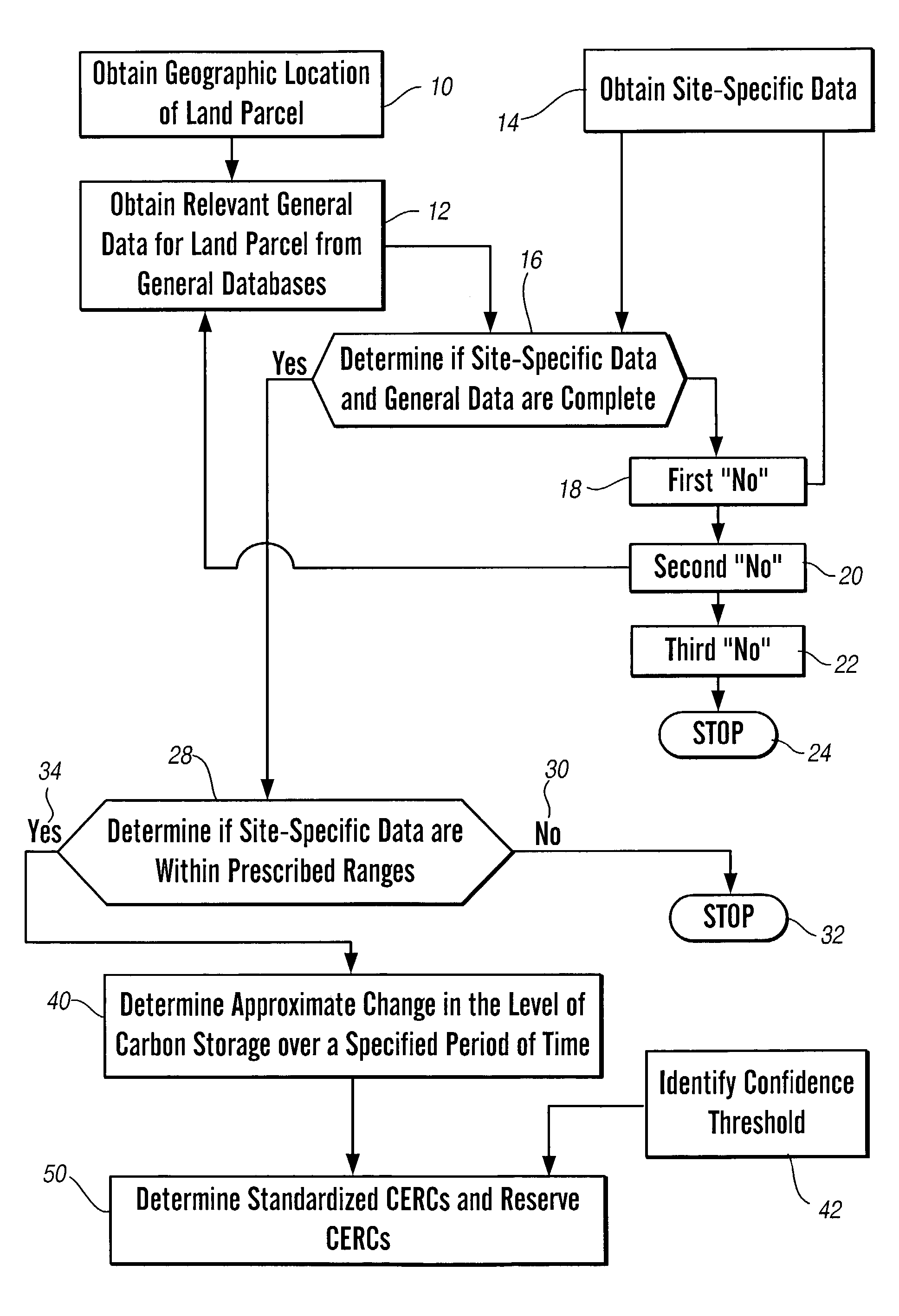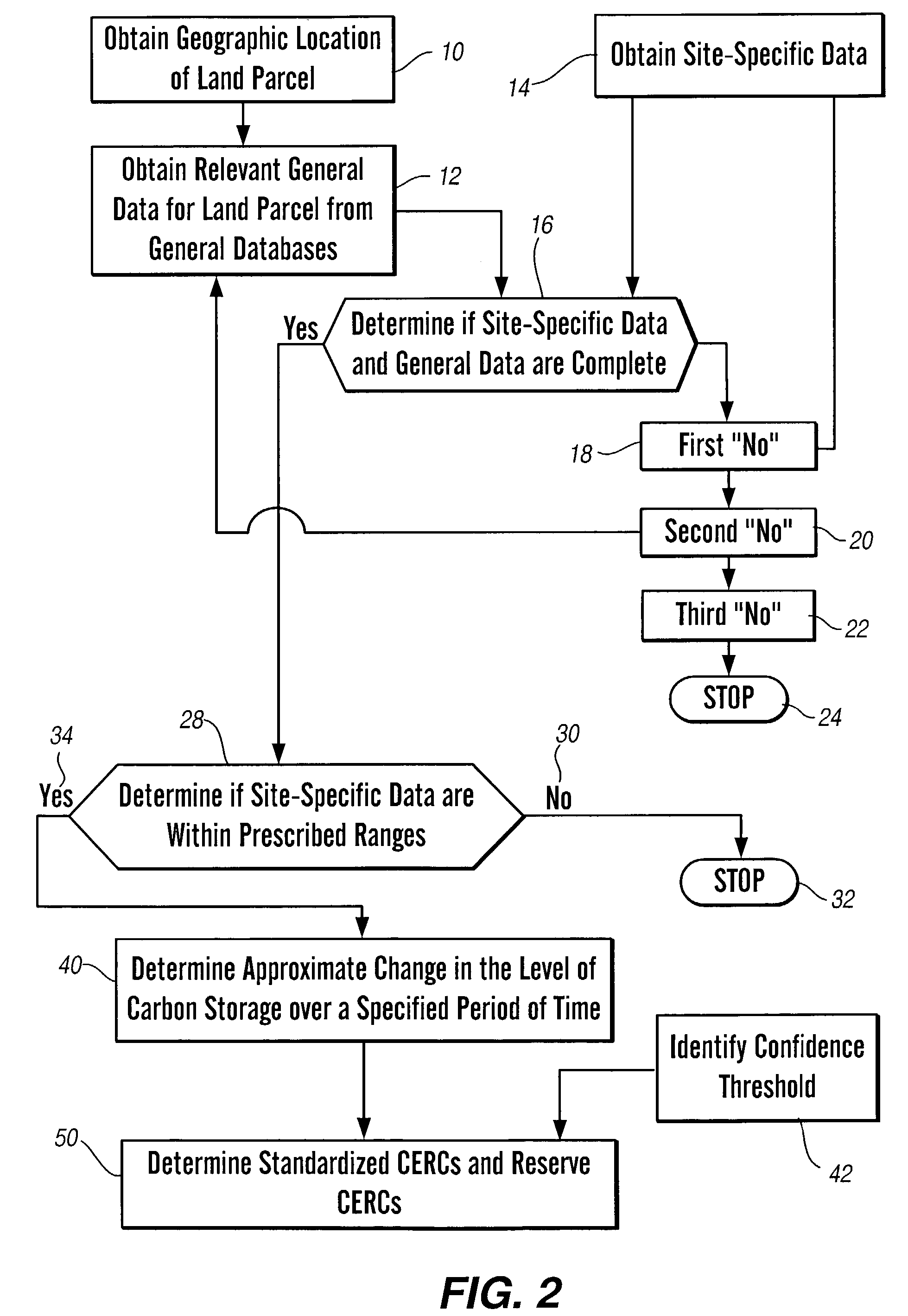Method and apparatus for generating standardized carbon emission reduction credits
a carbon emission reduction and standardized technology, applied in the field of standardized carbon emission reduction credits, can solve the problems of increasing the concentration of greenhouse gases in the atmosphere, reducing the price paid to producers, and difficult to establish and engage in a market for cercs
- Summary
- Abstract
- Description
- Claims
- Application Information
AI Technical Summary
Benefits of technology
Problems solved by technology
Method used
Image
Examples
Embodiment Construction
[0017]This invention generally relates to a method and apparatus for determining standardized carbon emission reduction credits and, more particularly, to a method and apparatus for generating, quantifying and confirming standardized carbon emission reduction credits and reserve carbon emission reduction credits.
[0018]In general, there are six elements of a CERC: 1) a baseline of emissions of specific greenhouse gases as a result of business as usual activities; 2) additivity; 3) permanence; 4) leakage; 5) ownership; and 6) verification. The business as usual baseline generally refers to the level of greenhouse gas emissions from continuing current management practices in that particular industry. In the case of farmers, business as usual typically is defined as conventional tillage agriculture, but may be specifically determined for each land parcel based on the land management history. Further, the business as usual baseline may be defined as an average of a larger community, rath...
PUM
| Property | Measurement | Unit |
|---|---|---|
| time | aaaaa | aaaaa |
| time | aaaaa | aaaaa |
| time | aaaaa | aaaaa |
Abstract
Description
Claims
Application Information
 Login to View More
Login to View More - R&D
- Intellectual Property
- Life Sciences
- Materials
- Tech Scout
- Unparalleled Data Quality
- Higher Quality Content
- 60% Fewer Hallucinations
Browse by: Latest US Patents, China's latest patents, Technical Efficacy Thesaurus, Application Domain, Technology Topic, Popular Technical Reports.
© 2025 PatSnap. All rights reserved.Legal|Privacy policy|Modern Slavery Act Transparency Statement|Sitemap|About US| Contact US: help@patsnap.com



